Pool Reactors 2: Bigger Plans, Better Instruments
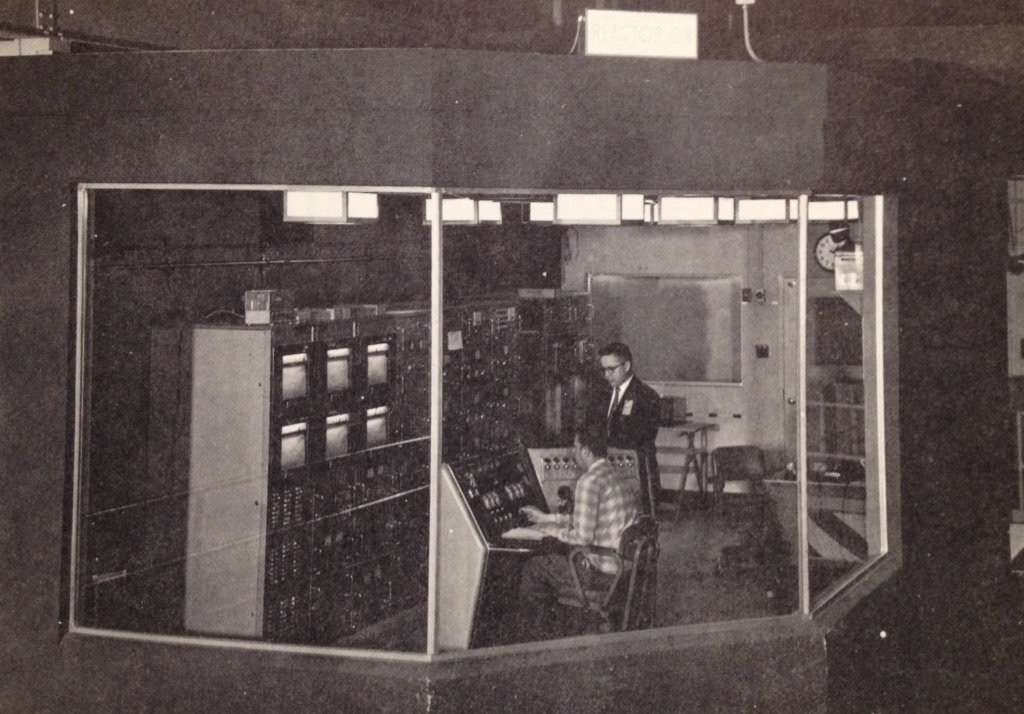
Control Room, Naval Research Reactor, circa 1958.
In the previous installment, we observed that some of the earliest pool reactors incorporated their instrumentation right on the moving bridge which supported the reactor core. As reactors increased in size and power and as exposure was considered, control was moved off the bridge onto the floor and then often into a control room (as seen above) in later designs. These control rooms could either be at operating floor height with direct view of the reactor, or separate in another area of the facility.
Before the close of the 1950's off-the-shelf items to assist in the rapid design and construction of pool and other small reactors had become available including fuel elements and, very importantly, instrumentation and control equipment.
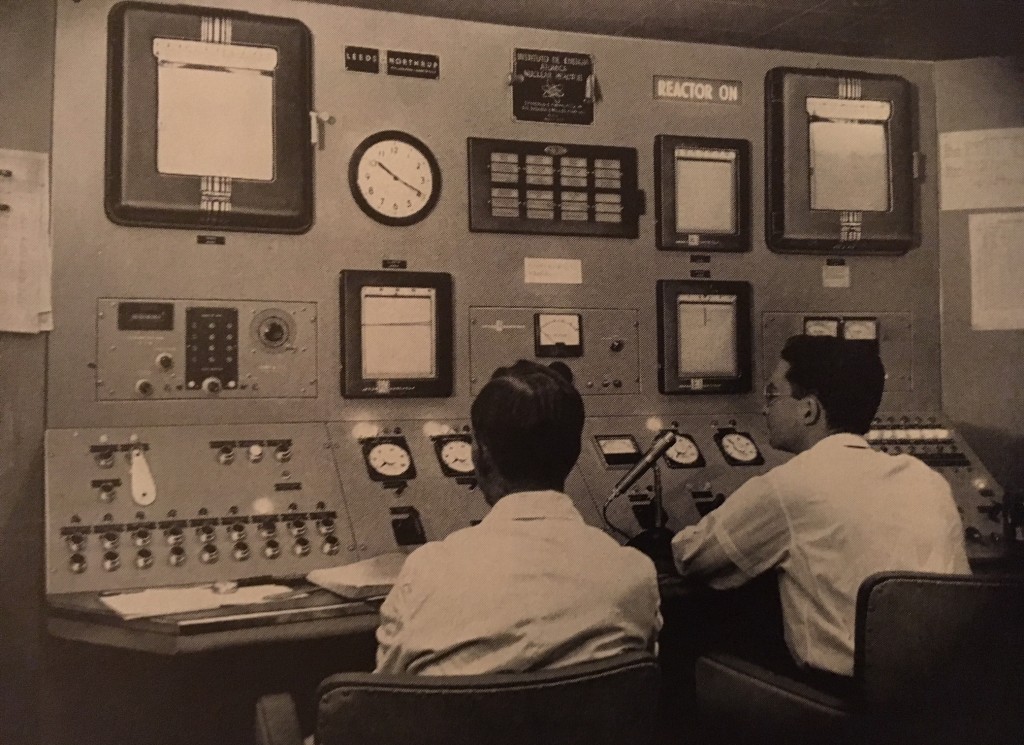
Leeds & Northrup offered complete reactor instrumentation for small reactors and supplied it to a variety of locations. The installation seen here was built for the Sao Paulo, Brazil reactor. This was a 5 MWt pool type designed and built by Babcock & Wilcox.

An advantage of Leeds & Northrup reactor instrumentation as offered by the end of 1959 was instrumentation in modules, greatly easing troubleshooting and replacement. Illustrations from Leeds & Northrup sales material.
As requirements for smaller reactors moved up from simple training requirements to include research and testing, the size and power of the required reactors grew - and with it, the size of the facilities. Eventually some very large facilities for the "simple" swimming pool reactor were designed and built.
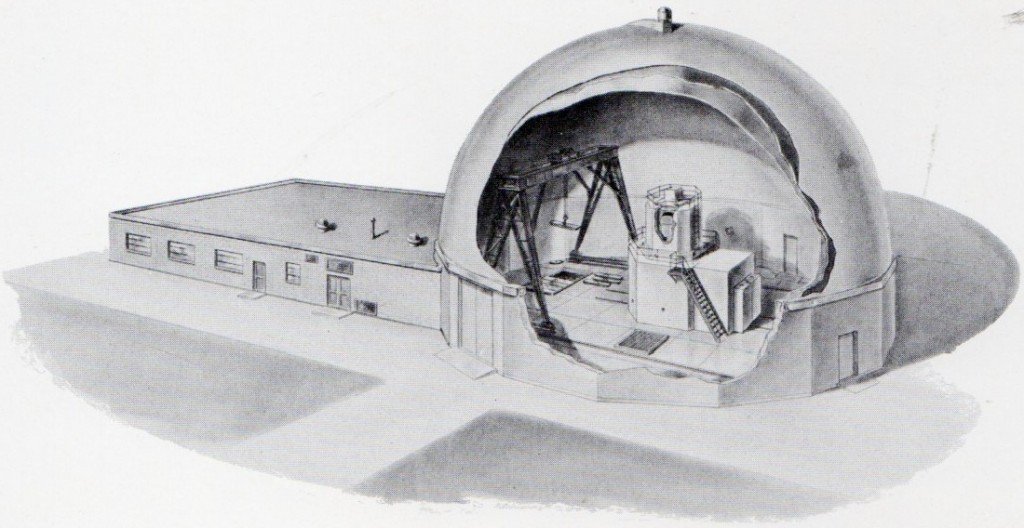
This artist's concept was produced in the late 1950's by Vitro Engineering. This company did not construct reactor cores or instrumentation but rather offered complete engineering of the required facilities. According to the Vitro brochure from which this illustration was obtained, the company offered: •Planning of research reactor installations •Site evaluation / hazard analysis •Reactor engineering •Design of support facilities and hot labs •Construction management •Preliminary operation and operator training. This paralleled the offering of most later / other 'engineer-constructor' firms such as Bechtel, EBASCO, United Engineers and Constructors, and others.
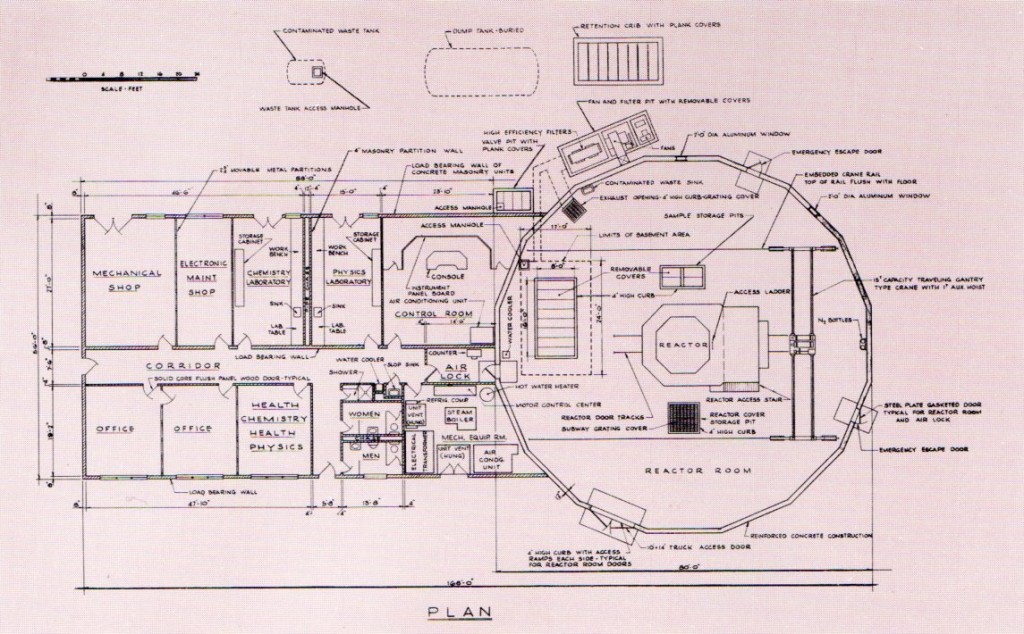
The layout of the Vitro Engineering training/research reactor facility are seen here in this drawing which is intended to match the artist's concept seen above.
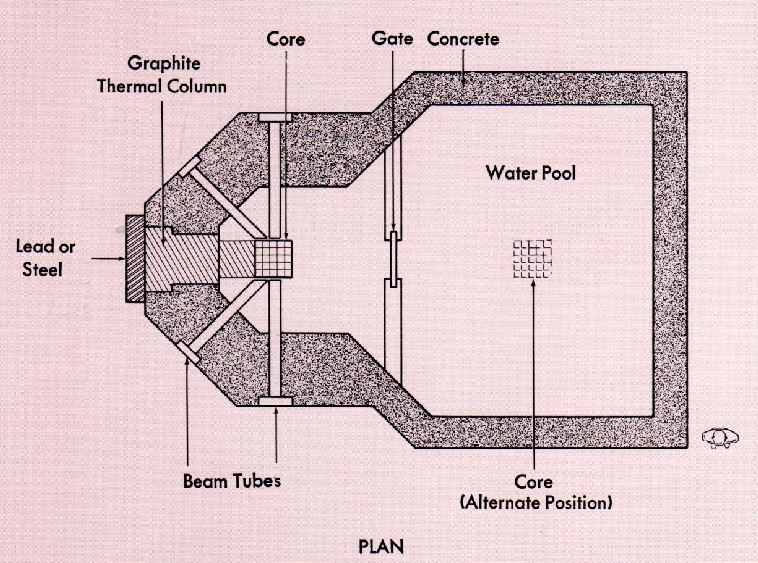
The Vitro illustration of the reactor pool area itself (see figure for scale, lower right) is interesting when compared with the tiny ACF installation shown in the first installment of this series.
One of the best-known early large installations was that known as the Ford Nuclear Reactor, built at Ann Arbor Michigan by the University of Michgan's Michigan Memorial - Phoenix Project. The story of this reactor and its facilities is perhaps best told, briefly at least, by the first two paragraphs of the operating manual for the Ford Reactor itself, a copy of which this writer is fortunate to own. The story is thus:
"Operation of the Ford Nuclear Reactor constitutes one of the activities of the Michigan Memorial - Phoenix Project of the University of Michigan. The Phoenix Project is a University-administered interdepartmental activity dedicated to the peacetime utilization of nuclear energy. It is supported by gifts from University alumni and friends and from industry.
The reactor and the building housing it were constructed with a gift of one million dollars from the Ford Motor Company Fund, and contribution from this public-spirited organization to the Phoenix Project. Construction of the research reactor was licensed by the Atomic Energy Commission in February, 1955, construction began in the summer of the same year, and the dedication took place in October, 1956. The reactor fuel was furnished by AEC free of charge."
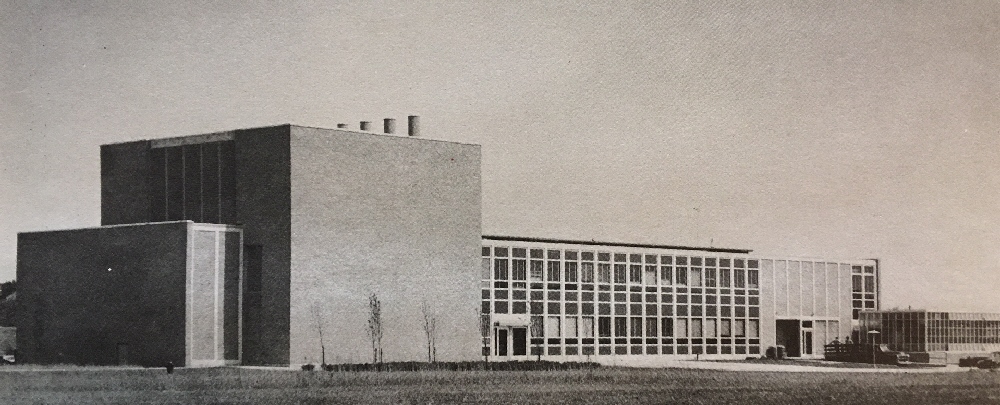
Ford Nuclear Reactor as pictured in the operating manual. The reactor building at left was constructed of one foot thick steel reinforced concrete and was approximately four stories above grade. The reactor could operate at power levels up to 100 KW using just natural circulation cooling of the pool alone; however a forced 1000 gallon per minute system was provided that could hold the pool water at 90F with a core power of 1000 KW.
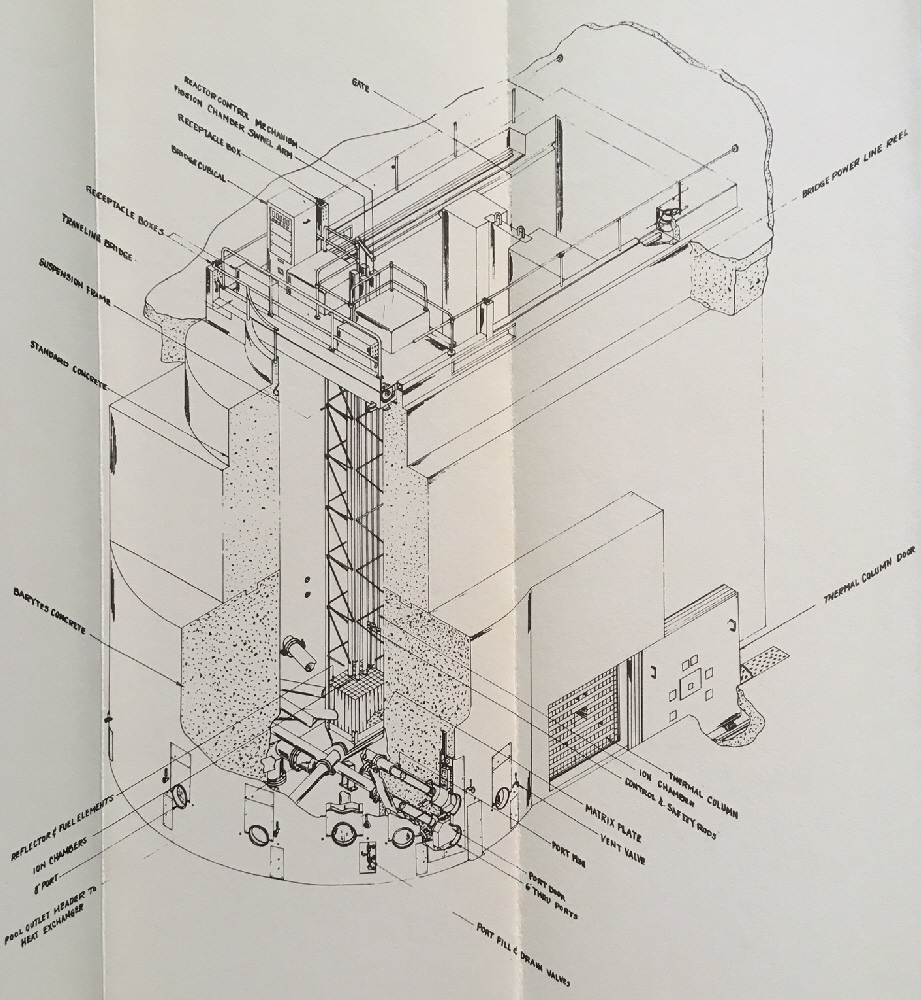
Interesting isometric drawing from the Ford Nuclear Reactor manual showing the reactor itself, the bridge and some of the fittings made to allow research to be conducted (including the beam tubes and a thermal column.) The fuel for this reactor was provided free by the AEC, and in fact was fabricated by Oak Ridge National Laboratory. The fuel duplicated that used in the pioneering Bulk Shielding Reactor. Use of existing fuel designs was just one element that sped the whole project; another was the use of 'off the shelf' Leeds & Northrup reactor instrumentation, already shown in earlier illustrations at different facilities.
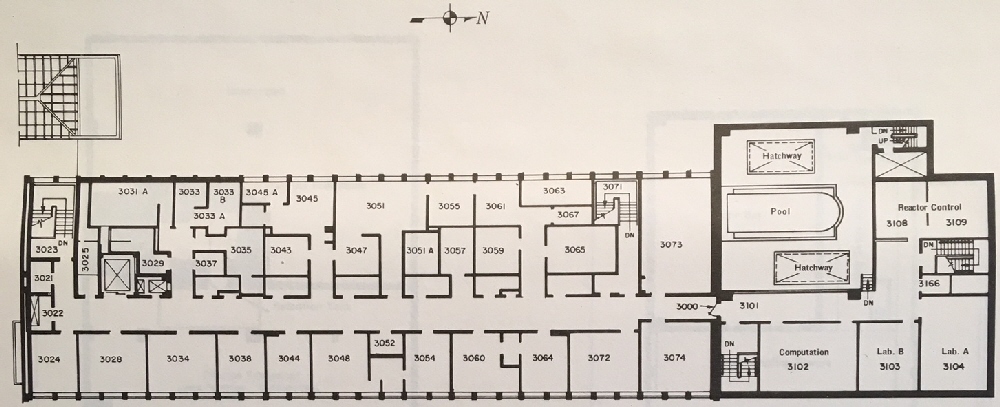
Interesting drawing from the Ford Nuclear Reactor operating manual shows the third floor facilities. Note that the control room is up here, on the third floor at a level above the pool reactor operating floor whereas on the Vitro Engineering design it's outside the containment and on the first floor. Unfortunately the manual does not tell us the purpose of all of the numbered rooms, but the magnitude of the facility is impressive.
Operation of the Ford Nuclear Reactor ended in the year 2003 with the fuel being removed in December of that year, and in 2004 the University of Michigan made the decision to permanently close the reactor and decommission it. This multi-year process (which lasted from 2006 to 2012) ended successfully with the termination of the facility's license on April 14, 2015. (The Ford Nuclear Reactor had held AEC facility operating license R-28.)
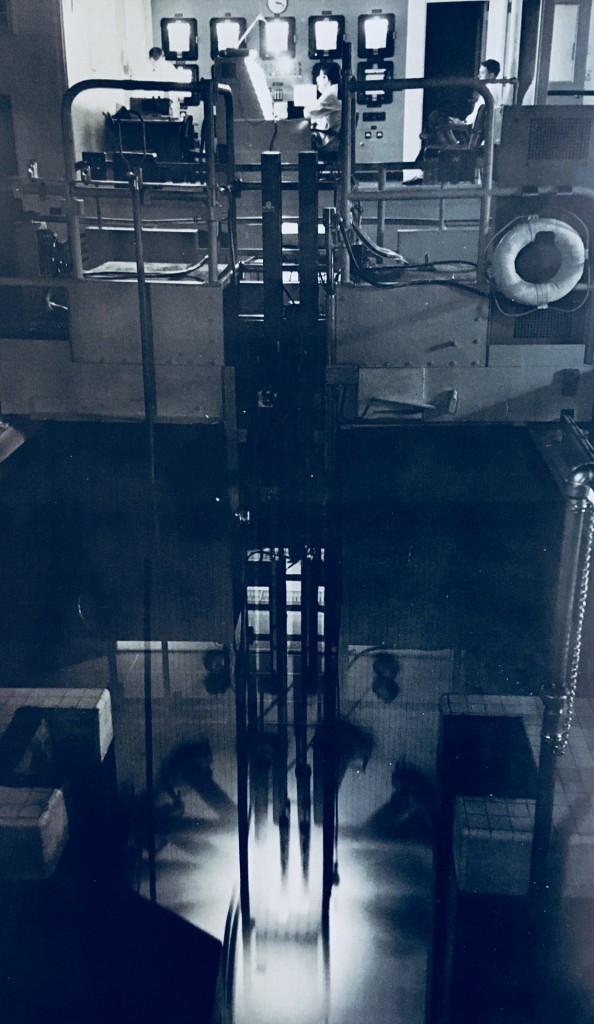
Glorious view of the Ford Nuclear Reactor in operation, from the control room all the way down to the core surrounded by the Cherenkov radiation glow. Photo from Atoms for Peace / USA 1958, US Atomic Energy Commission.
Next installment: The construction of the Ford Nuclear Reactor facility in pictures!
 Will Davis is a member of the Board of Directors for the N/S Savannah Association, Inc. He is a consultant to the Global America Business Institute, a contributing author for Fuel Cycle Week, and he writes his own popular blog Atomic Power Review. Davis is also a consultant and writer for the American Nuclear Society, and serves on the ANS Communications Committee and the Book Publishing Committee. He is a former U.S. Navy reactor operator and served on SSBN-641, USS Simon Bolivar. His popular Twitter account, @atomicnews is mostly devoted to nuclear energy.
Will Davis is a member of the Board of Directors for the N/S Savannah Association, Inc. He is a consultant to the Global America Business Institute, a contributing author for Fuel Cycle Week, and he writes his own popular blog Atomic Power Review. Davis is also a consultant and writer for the American Nuclear Society, and serves on the ANS Communications Committee and the Book Publishing Committee. He is a former U.S. Navy reactor operator and served on SSBN-641, USS Simon Bolivar. His popular Twitter account, @atomicnews is mostly devoted to nuclear energy.
Feel free to leave a constructive remark or question for the author in the comment section below.

